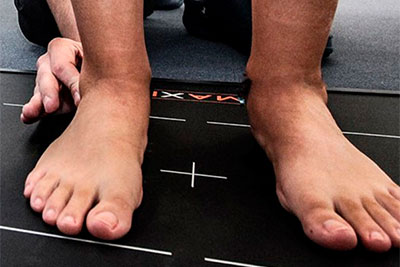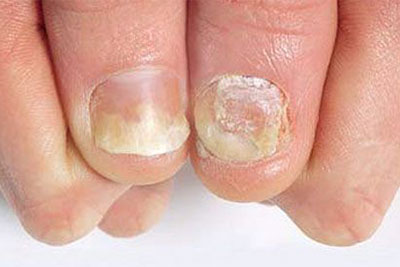Podiatry treatments in Santa Pola
PODIATRY CLINIC IN SANTA POLA
Our objective is prevent, diagnose and treat foot problems, which are often related to knee, hip and back pain problems.
El chiropodist, like other health professionals, must have the title that enables them to practice podiatry, for which they prepare for years at the university, acquiring specific knowledge in their field, such as: anatomy, physiology, biology, bioethics, general, child, geriatric and sports podiatry as well as diabetic foot and surgery.
At Policlínica del Río-Hortega, we work in a multidisciplinary way, if the case requires it, to address certain treatments with other health professionals, such as our Physiotherapy Unit or Nutrition and Dietetics and. Teamwork and treating the pathology from different professional points of view, in most cases, is the key to success.
Pedicure
Chiropody is the most common treatment in the podiatry office. It consists of eliminating hyperkeratosis of the feet and improving the health of the nails by delaminating and milling them.
Diffuse skin is typical, which is hard skin that doesn't hurt, but we also tend to suffer from localized hyperkeratosis at one point that can be very painful. In these, the bone factor influences more and to solve them definitively, in addition to an exhaustive chiropody, we can resort to templates or MIS surgery (minimum incision).

Biomechanical exploration

The correct study of the footprint we prevent osteoarticular, muscular and ligamentous injuries such as sprains, fasciitis, muscular overloads, pain in the front of the foot, low back pain, tendonitis or knee pain because poor foot support can lead to higher areas. We also observe possible asymmetry, which is the difference in length between one leg and another.
Templates
Insoles are special orthotic devices to treat various disorders of the foot helping to correct an abnormal function during walking.
Before the prescription of personalized insoles, a biomechanical evaluation, which consists of an exhaustive examination of the lower limbs (hip, thigh, knee, leg, ankle and foot) in statics and dynamics, to find the cause of our condition.
After the examination and with a clear diagnosis, the phenolic foam mold is taken. These foams are sent to a collaborating company so that they make the templates with CAD/CAM technology (Computer Aided and Mechanized Design) manufacturing them with the best materials.
Once delivered, We do free periodic reviews for all our patients, in which we examine the improvement and evolution of the pathology and evaluate the continuation or change of treatment.

plantar warts

plantar warts They are small benign tumors caused by HPV (human papillomavirus).
There are more than 100 different types of HPV. Depending on the type from which we get infected, we will suffer from warts in a different area of the body, including the feet. Plantar warts produce thickening of the skin, similar to that of hyperkeratosis, so a good examination will make us treat them on time and thus avoid contagion to other people. They are also very painful and can appear more than one at a time.
Bunions
Bunions and claw toes are treated according to stage (phase) in which it is located. At the beginning or before, if you know that there is a history in your family, it is best to carry out a good biomechanical examination by a specialized podiatrist to find what is causing it and be able to apply the best treatment to prevent it from going further.
When we have had a bunion for several years (if it is very painful or it bothers us aesthetically) we will need a good orientation in surgery, the same as with claw toes, since it is the only way to return the foot and toes to an adequate shape. Of course, it will always be necessary to carry out (before and after surgery) a biomechanical examination to find out the origin and treat it as well. It doesn't make sense to have surgery if we don't treat the main cause, because the deformity will come back.

diabetic feet

The role of podiatry in diabetic foot care. If you are diabetic, in our podiatry unit in Santa Pola we will teach you how to maintain optimal foot condition to prevent ulcers, teaching you a good nail trim, correct foot hygiene, knowing which footwear is the most suitable for you and advising you on what type You need a personalized insole to optimize the distribution of pressure on the foot, contain deformities and thus prevent the appearance of ulcers.
Monthly nail care in older diabetics (along with circulatory problems) is very important. The nails grow slower and thicker and under them we usually find small ulcers that are not seen until we clean the nail.
Nail Pathologies
Nails can suffer from different conditions due to fungi, bacteria, poor morphology, age, poor footwear and some systemic diseases.
For this reason, we must analyze and diagnose in a global way, taking into account all the characteristics and history of the patient, in order to make a correct diagnosis and treat adequately.
Most common nail conditions:
- Ingrown nails (nailed nails).
- Black nails (typical in athletes).
- Thickened nails (very common in older people).
- Fungus (onychomycosis).

orthonixias

orthonyxia It is a very simple technique to put and understand how it works. It consists of the application of surface force tensors (a force in another direction is superimposed on the nail) to correct the nail shape, thus preventing it from pressing too hard on the nearby skin, digging in. The most common example for you to understand what they are is dental orthodontics that corrects the position of our teeth, only instead of applying 'the bracket' to all the nails, it is applied only to the affected one. We won't let you forget that Many nail and foot problems come from inadequate footwear, fungus, poor nail cutting or a bad footstep., so in consultation we will guide you in everything.





